In this tutorial, you will learn how to create a finite element mesh for a Hollow Profile using the Extrusion Wizard.
The model files for this tutorial are located in the file mfs-1.zip in the subdirectory \hx\MetalExtrusion\HX_0151. See Accessing Model Files.
To work on this tutorial, it is recommended that you copy this folder to your local hard drive where you store your HyperXtrude data, for example, “C:\Users\HyperXtrude\” on a Windows machine. This will enable you to edit and modify these files without affecting the original data. In addition, it is best to keep the data on a local disk attached to the machine to improve the I/O performance of the software.
| 2. | On the Preferences menu, click User Profiles. |
| 3. | For Application: select Manufacturing Solutions. |
| 4. | Select HyperXtrude and select Metal_Extrusion. |
| 5. | From the menu bar, select File > Open. |
| 6. | Browse to the file HX_0151.hm. |
This model has four components: Billet, Porthole, Weld Chamber and Bearing. There is a shared surface between all the components.
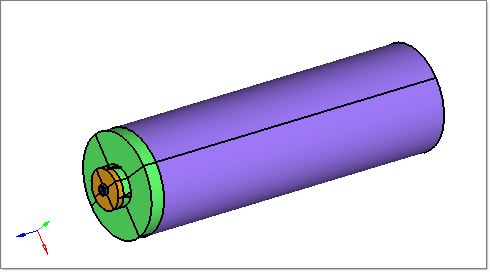
|
| 1. | On the Utility Menu, click Extrusion Wizard. |
Depending on how you have loaded the model, the Project Browser may prompt you for additional action (see HX-0004 for details).
| 2. | In the Extrusion Wizard, click Set Model Units. |
Note: Measure dimensions of the model (ex: diameter of the billet) by pressing F4 button on the keyboard. Find the distance between any two nodes lying diagonally opposite to each other on the circumference of the billet. The numerical value of this distance (the diameter of the billet) gives you an idea about the unit system in which the model is created.
In the present model, billet diameter is about 162. Hence, it is reasonable to conclude that the length unit of the present model is ‘mm’. (162 inch diameter billets are practically not used in extrusion).
| 3. | Set the Unit System field to Metric and click OK to close the Select Model Units dialog. |
|
| 1. | Click Set Analysis Requirements. |
| 2. | The Process Data dialog is displayed. Set the options as shown below and click Next. |
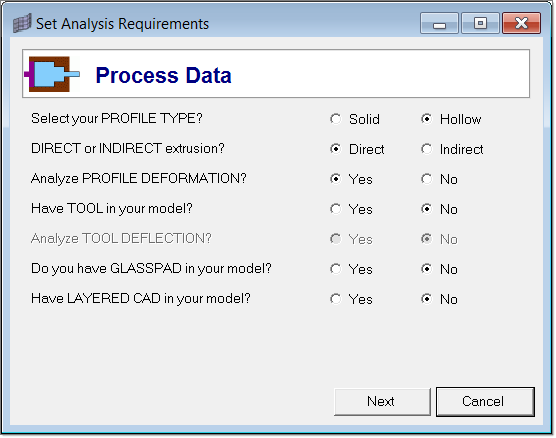
| 3. | In the Analysis Data page, set the options as shown below. |
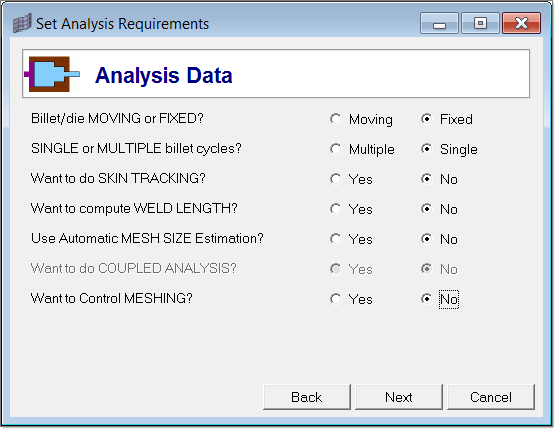
| 4. | Click Next again to select the extrusion components. Notice that the Extrusion Wizard already selected the components Billet and Bearing Cavity. Select Portholes and Welding Chamber. |
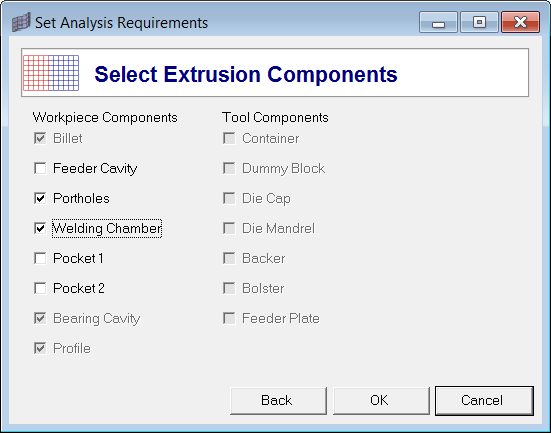
| 5. | Click OK to close the dialog. |
You will skip the Select Press Data option as the model does not have that information.
|
| 1. | Click Select Material Data. |
| 2. | Expand Workpiece, then expand Aluminum_Alloys and expand 6000_Series. |
| 3. | Select AA6063 and click Add-> to add the material under Selected Materials. |
You do not need to assign a material to the components in the Extrusion Wizard. The selected material will be assigned to the workpiece components automatically.
| 4. | Click Close to close the Select and Assign Material from Database window. |
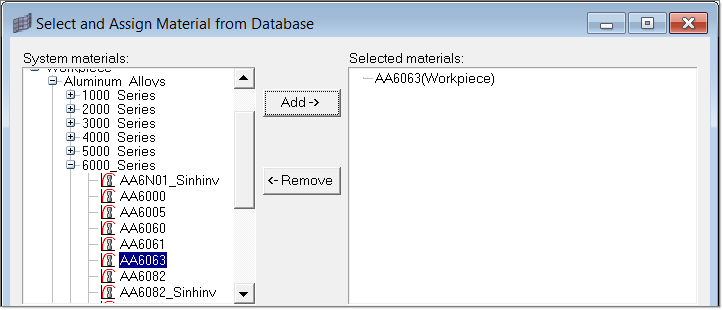
|
| 1. | Click the Generate Workpiece Mesh option. The Generate Mesh dialog opens. Notice that the Extrusion Wizard already picked the components for Billet, Porthole, Welding Chamber and Bearing Cavity. |
Note: Always rename the components by proper names so that the Extrusion Wizard identifies the components by default.
| 2. | Input the size of the elements as shown below. |
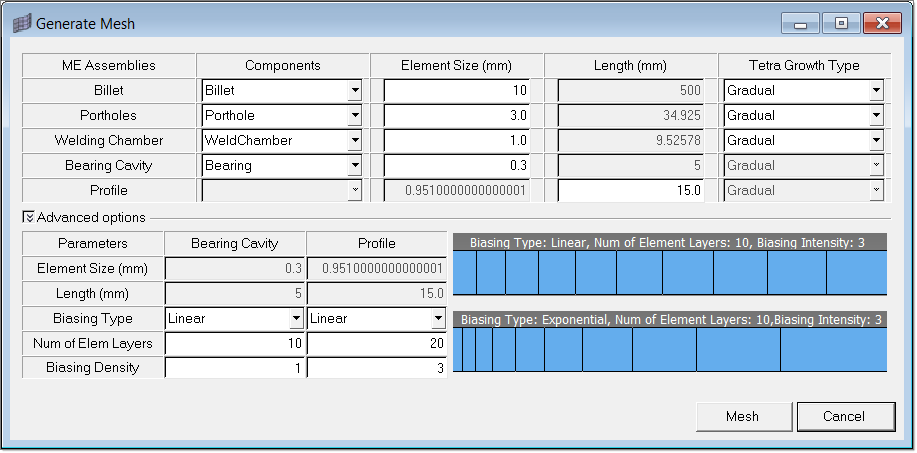
| 4. | After the mesh is created, click OK and close the window. |
In the Model Browser, notice that four new components, Billet3D, Porthole_WC3D, Bearing3D, and Profile3D are created.

|
| 1. | In the Extrusion Wizard, click Generate Workpiece BCs and input the parameters as shown below. |
| 2. | Click OK. This creates BC faces and associated load cards for all the 3D collectors. |
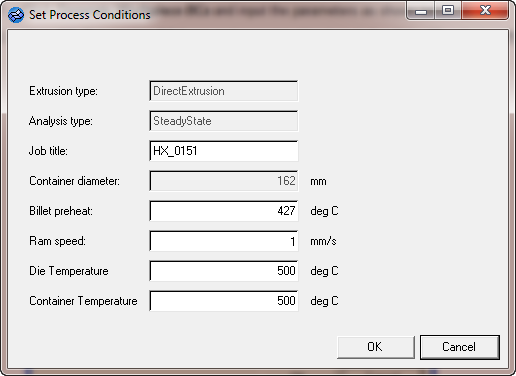
| 3. | Click on the Model Browser tab and notice that related Boundary Conditions components are created. |
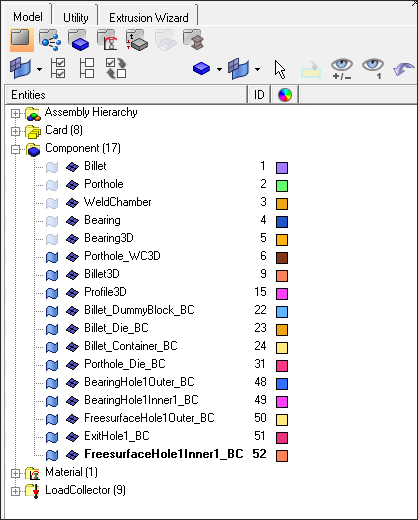
| 4. | Click on Summary to verify the data under Process Conditions, Materials, BCs and Element Statistics tabs. |
| 5. | Click on Parameters. Click on the Metal Extrusion tab and set the parameters as shown in the image. |
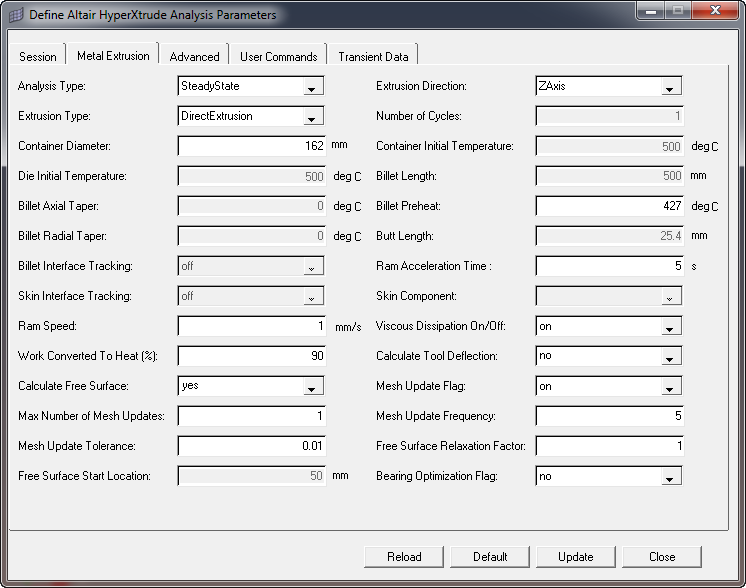
|
| 1. | Click File > Save As…. and save the file as HX_0151_FINAL.hm. |
| 2. | In the Extrusion Wizard, click Save and Export the Model. |
| 3. | Browse to choose the correct location for Project file name. |
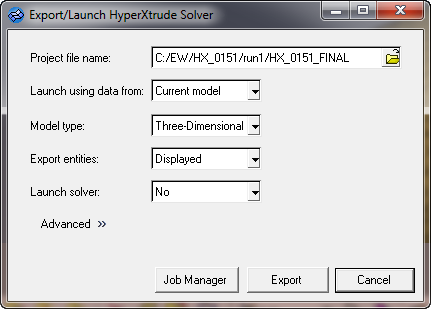
| 4. | Click Export to generate HX_0151_FINAL.grf and HX_0151_FINAL.hx files. |
The hx and grf files can be passed to the HyperXtrude solver for solving analysis.
|
Return to Metal Extrusion Tutorials







